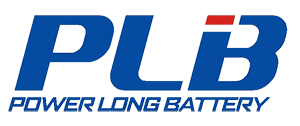What are the lithium-ion battery materials?
Lithium-ion batteries are a common rechargeable battery technology that has been widely used in electric vehicles, electronic equipment, energy storage systems, medical equipment and other fields. Today’s article learns about common materials for lithium-ion batteries. Lithium-ion battery materials include positive electrode materials, negative electrode materials, electrolytes, diaphragm, etc. The choice of lithium-ion battery materials largely affects the performance, safety and application of the battery. You can also refer to it when choosing lithium battery materials.

The following are common lithium-ion battery materials and their characteristics:
1. Positive electrode material:
Ternary materials (such as lithium manganese oxide, lithium nickel oxide): with high energy density and high battery voltage, suitable for high-performance applications such as electric vehicles and portable electronic devices.
Lithium iron phosphate: It has high safety and long life, and is suitable for applications with high safety requirements, such as power tools and energy storage systems.
Lithium Cobalt Oxide: High energy density but high cost, suitable for consumer electronics applications such as notebook computers and mobile communication devices.
2. Negative electrode material:
Graphite: It is the most common negative electrode material, which has high charge and discharge efficiency and stability, and is suitable for most applications.
Silicon: It has a high theoretical capacity and can increase the energy density of the battery, but it is prone to volume expansion and loss during the cycle, resulting in battery capacity attenuation. The challenge of its cycle stability needs to be overcome.
Graphene: It is an emerging negative electrode material with excellent electrical conductivity and mechanical strength, which is expected to improve battery performance.
3. Electrolyte:
Electrolyte is the medium that transports ions to conduct current in lithium-ion batteries, and the electrolyte must have good ionic conductivity.
Organic electrolytes: Commonly used organic electrolytes (such as carbonates, polymer electrolytes) have high ion conductivity and low internal resistance and are suitable for most applications.
Solid electrolyte: Solid electrolyte has higher safety and wider temperature range, but it still faces challenges in industrial production and cost.
4. Diaphragm:
The separator is used to separate the positive and negative electrodes and prevent the battery from short circuiting. At the same time, the separator needs to have good ionic conductivity to allow ions to pass through and realize the charging and discharging process of the battery.
Polyolefin separator is the most commonly used separator material in battery manufacturing. The common ones are polypropylene (PP) and polyethylene (PE) diaphragms. This material has good chemical stability and physical stability, and is not easy to be eroded by chemical substances in the electrolyte, and is also not easy to be physically deformed. And the manufacturing cost is relatively low, suitable for mass production.
Polymer-Ceramic Composite: This material combines polymers with ceramic particles to provide better thermal stability and mechanical strength. Polymer-ceramic composite separators are often used in lithium-ion batteries in high-temperature environments, such as solid-state batteries.
5. Current collector:
Current collectors are used to collect and conduct current, and commonly used current collector materials include copper foil and aluminum foil. Copper foil is a commonly used positive electrode current collector material, and aluminum foil is often used as a negative electrode current collector material. Both have good electrical conductivity and mechanical properties, and can effectively collect and transmit current.
The above is just a brief introduction to some common materials, and there are more possibilities and innovations in the future. On this road, we will also walk and witness. PLB focuses on the R&D and manufacturing of 26650 lithium-ion batteries. At present, PLB uses lithium iron phosphate, a positive electrode material with high safety and long cycle life, and graphite, a negative electrode material with high charge and discharge efficiency and stability, taking into account product safety and performance, high-performance, high-rate battery has been created, with a maximum charge of 5C and discharge of 50C. PLB’s products are widely used in UPS, AGV, medical equipment, starter power, power tools, home energy storage, solar lights and other scenarios, serving global customers and creating value for customers. If necessary, please contact email sales@plb.com.cn.

